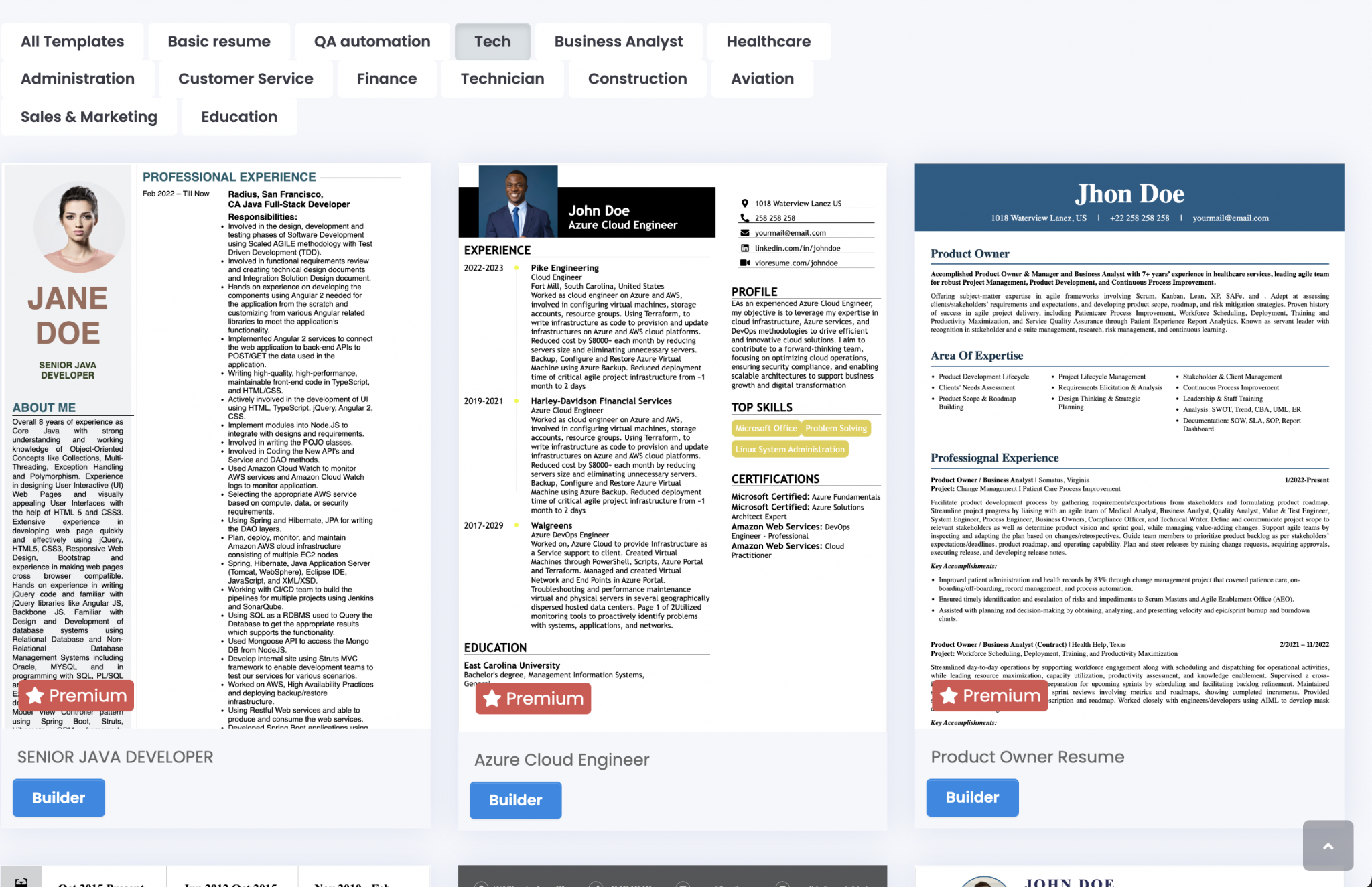As we approach 2025, the job market is rapidly transforming due to technological advancements, demographic shifts, and evolving industry needs. While certain careers in IT are at the forefront of this change, many other industries like healthcare, finance, logistics, and even traditional roles such as truck driving are evolving in response to new trends. Understanding the types of jobs that will be in demand is crucial for career planning, whether you’re interested in technology, healthcare, finance, or other sectors.
In this article, we will explore the top jobs in 2025 across various fields, including IT, nursing, caregiving, finance, logistics, and more. These roles are expected to grow significantly in the coming years, offering stability and opportunities for advancement.
1. Top IT Jobs for 2025: Leading the Future of Technology
Technology continues to be a driving force in almost every industry, and IT jobs will remain critical for businesses aiming to stay competitive. Here are the key IT roles that will dominate the job market by 2025.
AI and Machine Learning
- AI Engineers: AI Engineers will be at the forefront of developing artificial intelligence systems, automating complex processes, and improving operational efficiency across industries. They will be instrumental in creating smart solutions that enhance productivity and customer experience.
- Machine Learning Engineers: These professionals will build machine learning models that allow systems to improve over time. Machine learning is expected to drive advancements in industries like healthcare, finance, and marketing, making this role highly sought after.
Cybersecurity
- Cybersecurity Analysts: As organizations rely more on digital systems, cybersecurity analysts will play a crucial role in safeguarding sensitive data and protecting systems from cyber threats. With cyberattacks becoming more sophisticated, skilled cybersecurity professionals will be essential.
- Ethical Hackers: Ethical hackers will continue to be in demand as organizations seek to prevent cyberattacks by proactively identifying vulnerabilities in their systems.
Cloud Computing
- Cloud Architects: Cloud Architects will design and implement cloud solutions that enable businesses to scale and operate efficiently in a remote-first world. As more businesses migrate to cloud platforms, the demand for skilled cloud architects will rise significantly.
- DevOps Engineers: DevOps engineers will continue to bridge the gap between development and operations, ensuring that software deployment and maintenance are efficient and reliable.
2. Healthcare Jobs for 2025: The Growing Demand for Nurses and Caregivers
The healthcare sector will see significant growth by 2025, largely driven by an aging population and increased demand for personalized care. Careers in nursing, caregiving, and specialized healthcare roles will be essential.
Nursing Roles
- Registered Nurses (RNs): RNs will continue to be indispensable in hospitals, clinics, and long-term care facilities. With more people needing medical care, especially in aging populations, RNs will be needed to manage patient care, administer treatments, and provide emotional support.
- Nurse Practitioners (NPs): Nurse practitioners are advanced practice nurses with the authority to diagnose and treat illnesses independently. With the shortage of primary care doctors, NPs will be relied on to fill crucial gaps in healthcare delivery, especially in underserved areas.
Caregiving Roles
- Home Health Aides: Home health aides will be increasingly important as more elderly individuals opt for at-home care rather than moving to nursing homes or care facilities. These professionals assist with daily activities, medication management, and provide companionship.
- Personal Care Aides: Personal care aides focus on helping individuals with household tasks and personal care activities. With the preference for aging in place, the demand for these roles will only increase.
Medical Assistants
Medical assistants perform both clinical and administrative tasks in healthcare facilities. As healthcare systems become more digitized and streamlined, medical assistants will be integral to ensuring that operations run smoothly and efficiently.
3. Financial Sector Jobs for 2025: Navigating an Evolving Market
The finance industry will continue to evolve, driven by advancements in fintech, blockchain, and increasing regulations. Key financial roles will remain essential as businesses seek experts who can manage resources, interpret data, and drive financial strategies.
Accountants
- Certified Public Accountants (CPAs): While automation tools are reshaping accounting tasks, the role of CPAs will remain vital. By 2025, accountants will focus more on advisory roles, providing insights on financial strategies, tax planning, and compliance with evolving regulations. Automation will take over basic bookkeeping, but skilled accountants will still be needed for analysis and consulting.
Financial Experts
- Financial Analysts: Financial analysts will continue to play a crucial role in helping businesses make informed investment decisions, understand market trends, and forecast future financial performance. Their expertise will be even more critical in a fast-changing economic landscape, where businesses need to stay agile.
- Personal Financial Advisors: As more individuals plan for retirement and manage investments, personal financial advisors will be in high demand. People will need expert advice on asset management, tax strategies, and long-term financial planning.
4. Logistics and Truck Driving: Essential Careers for Supply Chain Management
While technology is advancing rapidly, certain jobs in logistics and transportation remain critical to the global economy. Truck drivers and logistics managers will continue to be in demand, albeit with evolving roles as automation and self-driving technology reshape the industry.
Truck Drivers
Despite ongoing advancements in autonomous vehicles, the human touch in logistics and transportation will still be critical by 2025. Truck drivers, especially those with experience in navigating complex routes, handling deliveries, and adapting to unexpected challenges on the road, will continue to be in demand.
- Long-Haul Truck Drivers: The long-haul trucking industry is essential for transporting goods across states and countries. While automation is likely to change aspects of this role, human drivers will still be needed to handle complex routes, customer interactions, and unexpected issues on the road.
- Last-Mile Delivery Drivers: E-commerce growth will drive demand for last-mile delivery drivers—those responsible for delivering goods from distribution centers to the final destination. These roles require flexibility and customer service skills, making them less likely to be fully automated in the near future.
Supply Chain Managers
- Supply Chain Analysts: Supply chain managers and analysts ensure that goods move efficiently from manufacturers to consumers. They will be critical in optimizing logistics, managing supplier relationships, and ensuring business continuity in an increasingly complex global supply chain.
5. Emerging Jobs in 2025: Blockchain, Renewable Energy, and Beyond
Certain industries are emerging quickly, bringing new opportunities for professionals to build careers in cutting-edge fields. These jobs span areas like renewable energy, blockchain technology, and environmental management.
Blockchain Developers
Blockchain technology is already transforming industries like finance, supply chain management, and healthcare. Blockchain developers will be responsible for creating decentralized applications and ensuring the security of blockchain networks. With businesses exploring blockchain for secure transactions and smart contracts, this role will be in high demand.
Renewable Energy Engineers
As the world moves toward more sustainable energy sources, renewable energy engineers will play a crucial role in developing solutions that reduce dependence on fossil fuels. These engineers will work on solar, wind, and energy storage systems, helping to create a greener future.
Environmental Scientists
Environmental scientists will work with governments, corporations, and non-profits to address climate change, pollution, and conservation challenges. As sustainability becomes a central focus for businesses, these professionals will help develop strategies that balance economic growth with environmental stewardship.
6. Essential Skills for Jobs in 2025
Regardless of the field, professionals looking to succeed in 2025 will need a blend of technical and soft skills:
- Technical Skills: From programming and data analysis in IT roles to understanding medical technologies in healthcare, having strong technical skills will be essential. Cloud computing, AI, machine learning, and cybersecurity will continue to be top areas of expertise in the tech industry.
- Soft Skills: Communication, empathy, teamwork, and problem-solving are vital across all industries. Whether you’re a nurse providing care, a financial advisor guiding clients, or a truck driver handling last-minute delivery changes, interpersonal skills will be as important as technical know-how.
- Continuous Learning: As technology continues to evolve, the ability to continuously learn and adapt will be critical. Professionals in every field—from IT to finance to healthcare—must stay updated on the latest trends, technologies, and best practices to remain competitive.
Conclusion: Preparing for the Future of Work
By 2025, the job market will be shaped by technology, healthcare demands, financial expertise, and evolving logistics needs. From IT roles in AI and cloud computing to caregiving positions supporting an aging population, a wide range of opportunities will be available for those with the right skills. As technology advances, professionals must embrace continuous learning, adapt to industry trends, and develop both technical and interpersonal skills. Whether you’re planning a career in nursing, finance, IT, or logistics, the future promises diverse opportunities for those prepared to meet the challenges of tomorrow.










